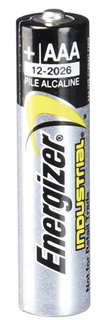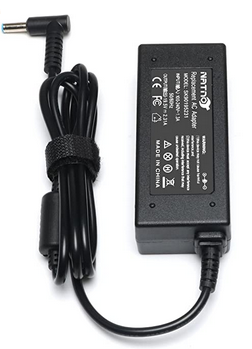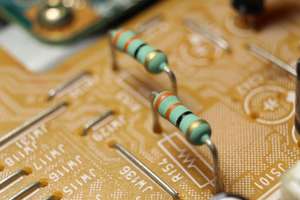
AC/DC
AC/DC
No No No I’m not referring to the popular Austrailian band with the hit song “Highway to Hell.” If you watched final destination 2 then you probably know the part this song started playing and bad stuff happened. In electrical circuits, we use either Alternating Current (AC) or Direct Current (DC).
So what do these terms mean?
Alternating current describes a circuit in which the electrons keep changing the direction while direct current refers to a circuit in which the electrons flow steadily in a single direction.
Direct Current, DC
This is pretty straightforward. Here is how it works. There is a positive terminal and a negative terminal.
Practical Moment
Open a remote control in your house – like your Radio or TV remote. If you are Zimbabwean, stay away from the DSTV remote, especially if there is a soccer match. That remote comes with a set of batteries. Take one of the batteries out. There is one part with a big + sign. That is what is called the positive terminal. Now have a look at the other end. There is a – sign. That is what is called the negative terminal. We scientists agreed that current flows from the positive terminal to the negative terminal (more about this another time). This means that if you place a device such as an LED (a tiny light that allows current to flow in one direction) in between the positive terminal and the negative terminal, current will flow from the positive terminal to the negative terminal and make the LED light up. It will stay on as long as you hold it in place.

DC is represented by a straight flat line.

In electrical circuits, you can often find DC being represented as a solid line with dotted lines under it.
Alternating Current, AC
This is where things start to get a little bit weird. Let me give a bad example. Alternating Current is like a narrow passage with two big, blood thirsty dogs on either end. Lets pretend you are a super human and your super power is having an infinite amount of energy to run. You are in this passage and you find one dog at one end, race towards the other end, find another scary dog and run back to the other end. You repeat this process forever. This is what alternating current does. One minute it is positive, then the next moment it is negative, then the next it is positive, then the next it is negative…
But I’ve never used negative electricity?
Very good point. Let us introduce you to a new concept – frequency. Frequency just represents the number of …..wait for it…...its a big word…..oscillations. Frequency is the number of oscillations per unit time. This is just “greek” for saying the number of times you have a wave.
THE FULL AC CYCLE

Image from study.com
This wave is what is commonly referred to as a full cycle. In the first half cycle (the positive part), Voltage rises from zero to the maximum point then goes back to zero. This point is what we call the amplitude. Scientists. They love big words don’t they?
In the second half cycle, the Voltage drops from zero to the minimum point and back to zero.

Image from Quora.com
So. In Zimbabwe, we have electricity that has 50 complete waves per second i.e. 50 full cycles per second. This term is what is referred to as the frequency of the electricity. The maximum value that the electricity gets to (amplitude) is 240V. Since these oscillations take place so quickly, we are not even able to see the electricity going to 0V and back to 240 and as a result, if you measure the AC voltage from a typical electrical socket, the voltage you will get is 240V.
A little bit of confusion
In the last couple of paragraphs I explained the difference between AC and DC. Now I’m going to confuse you a bit. Most electrical devices use DC. This means that they convert the AC to DC. Most electrical devices e.g. your smartphone, a radio, a TV need to have a constant current supply. Using AC wouldn’t work due to their principle of operation so instead, they use DC. One may then ask “Why do we use AC when the devices convert this AC back to DC? Why not just generate electricity using DC?”
These are very good questions.
In the past, we actually used DC. Let’s read an excerpt from a website from the United States:
Edison developed direct current -- current that runs continually in a single direction, like in a battery or a fuel cell. During the early years of electricity, direct current (shorthanded as DC) was the standard in the U.S. But there was one problem. Direct current is not easily converted to higher or lower voltages.
Tesla believed that alternating current (or AC) was the solution to this problem. Alternating current reverses direction a certain number of times per second -- 60 in the U.S. -- and can be converted to different voltages relatively easily using a transformer. - https://www.energy.gov/articles/war-currents-ac-vs-dc-power
Why we use AC and not DC
Transmitting electricity involves power losses. When you transmit electricity you want to make sure that there is as little electricity lost as possible. How do you do this? By using high voltages. In our first blog post , we explained the relationship between Power, Voltage and Current.
We said P = VI and if we play around with that, we get I = P/V. Another equation that is present for power is P = I2R
If we want to transmit a certain amount of power across a transmission line, we could either use a low voltage and a high current or a low current and a high voltage. Power lines cause heating as the power lines themselves have a resistance. This means that we need the voltage to be as high as possible and the current to be as low as possible.
DC can not be stepped up or stepped down. This means that if you transmit it at high voltages, the person in the home will not be able to step it down. Who would want to have 33 000V in the home? Nobody.
On the other hand, if you generate it at low voltages, you will have to make the current insanely high. As a result, you will need power lines that are so thick that the current power line poles would collapse in an instant. Not good either.
AC can be stepped up and stepped down. We can easily generate it at a power station, step it up to 330 000V, transmit it over super long distances, step it down to 240V and then use it for cooking, lighting, heating and more. In order to step up and step down the AC and DC we use a special device that is called the transformer. It transforms the AC from the voltage it is to the voltage we want. Magic isn’t it?
AC/DC Relationship in Practice
For us to see the practical application of the relationship between AC and DC, take your laptop charger. Have a look at the adaptor (power pack). In this case we are looking for the input power ratings and the output power ratings. You will see that your laptop takes in 240V and around 1A of AC and outputs around 19V and around 2A of DC.

There is AC input to the powerpack. It undergoes the process of rectification. Rectification is changing AC to DC. There is the use of special components called diodes, and capacitors to do this. These components help to change the “wave” we talked about in the previous blogpost into a straight line. This DC signal is what is used to provide power to the motherboard of the laptop as well as the connected devices.
Case #2
Have you seen devices that are plugged into the power supply and also allow for you to use batteries? An example, for those of you who are old enough to remember is the radio. Radios use AC and DC. They have an inbuilt rectification circuit so that is why they do not have a power pack. They also allow you to use a 9V DC battery.
Conclusion
Time for me to go now! I’ll see you in the final blogpost for this series in which I will mention various safety features we use in the home.





Comments